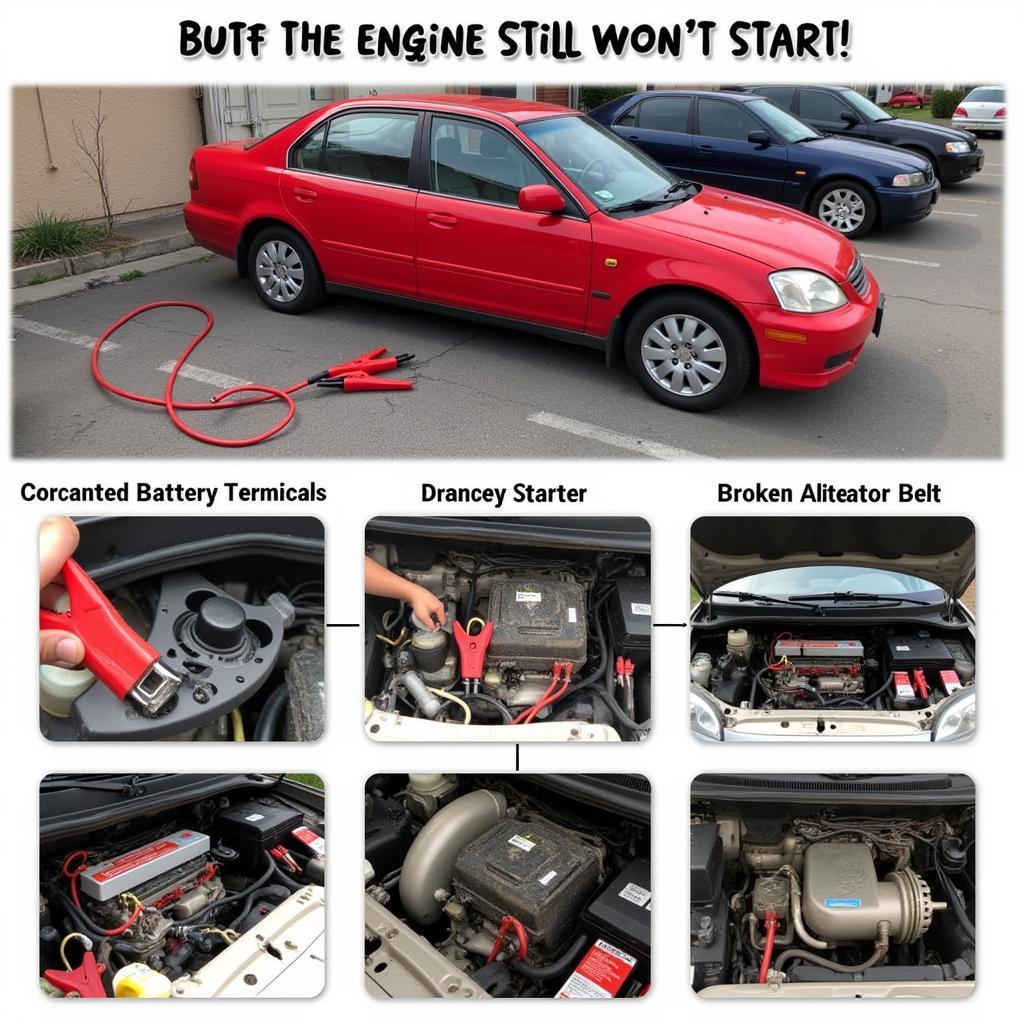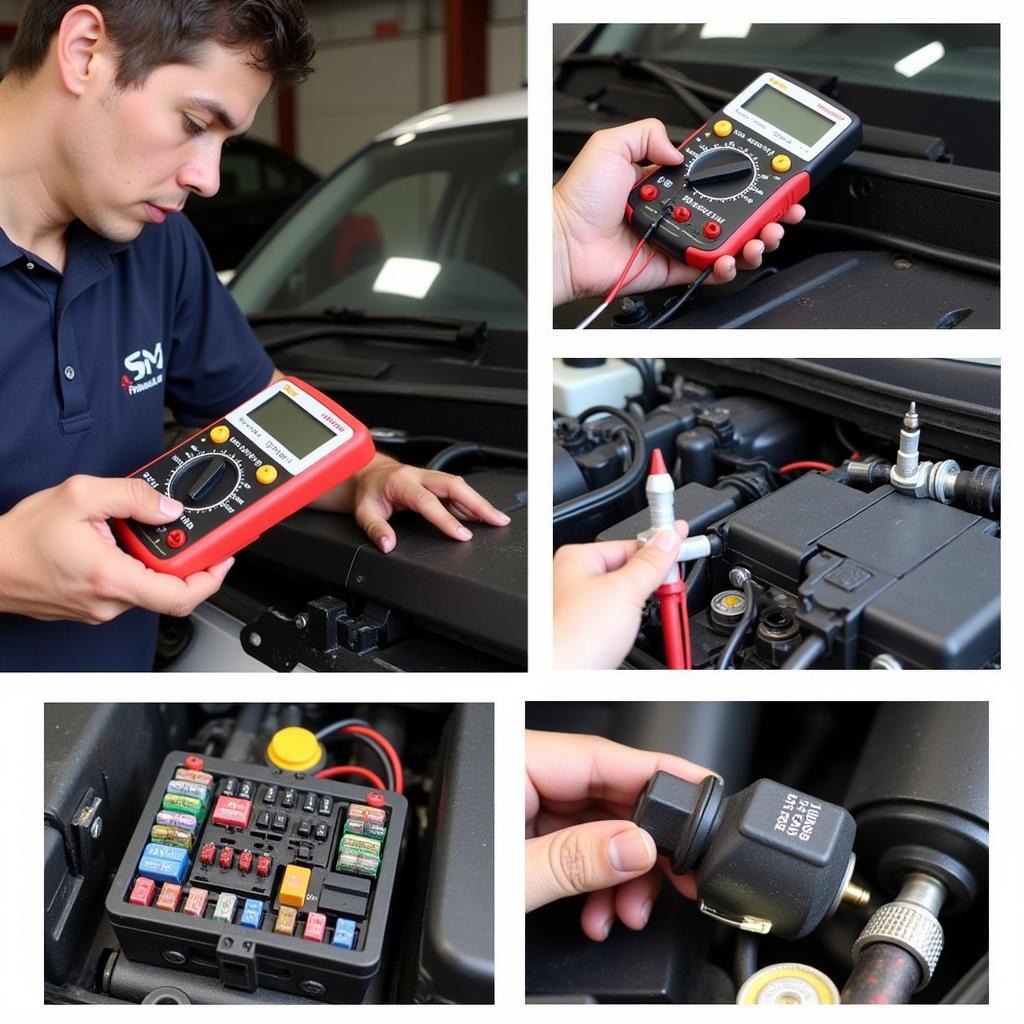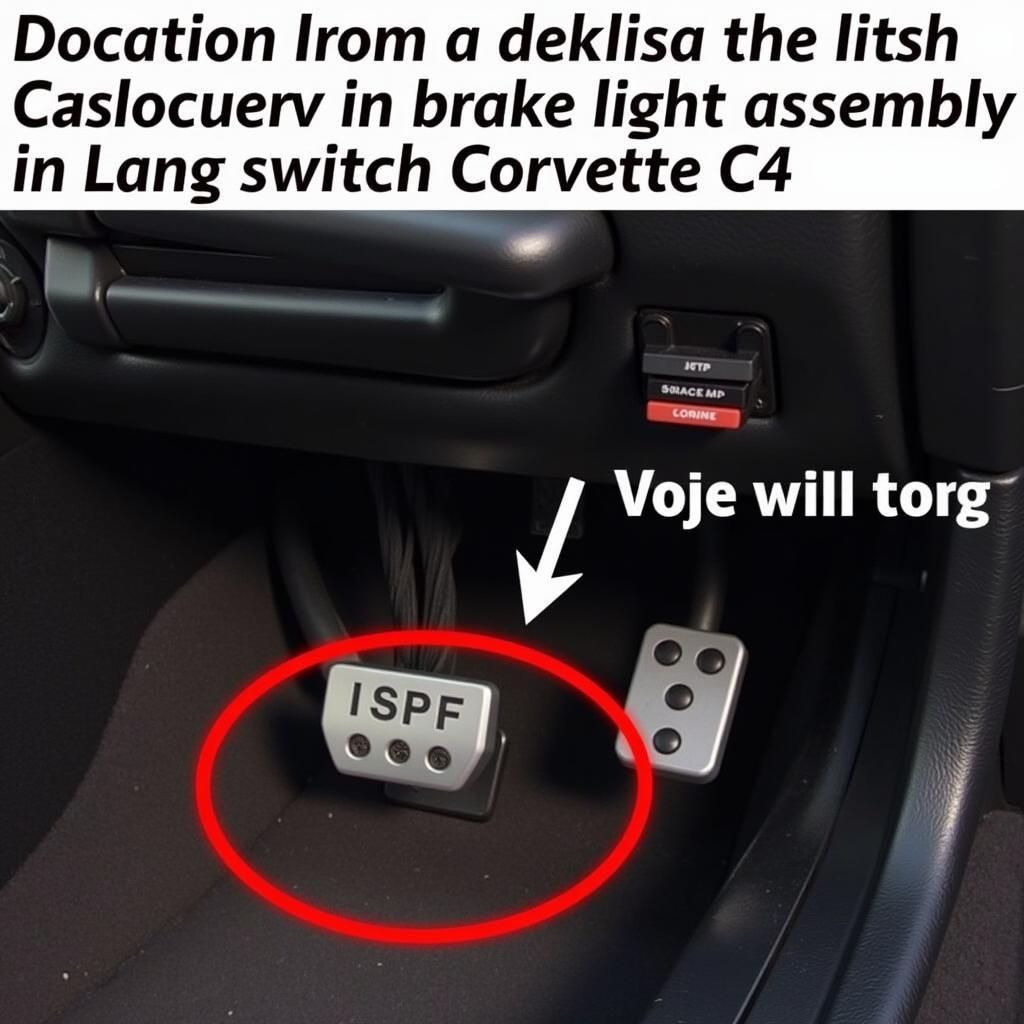Your car won’t start after jumping the battery? This is a frustratingly common problem, but don’t panic! While a dead battery is the most obvious culprit, several other issues could be at play. This comprehensive guide will walk you through the most common reasons why your car won’t start after a jump and provide practical solutions to get you back on the road.
A jump start often seems like the perfect fix for a dead battery, but sometimes, the car stubbornly refuses to cooperate. This can be due to a number of reasons, ranging from simple oversights to more complex electrical or mechanical problems. Understanding these potential issues is the first step towards a successful repair.
Why Your Car Won’t Start After a Jump
Several factors can prevent your car from starting even after a jump start. Here’s a breakdown of the most frequent culprits:
- Faulty Battery Connections: Corroded or loose battery terminals can hinder the flow of electricity, preventing a successful jump. Even if you’ve just jumped the car, double-check these connections.
- Bad Battery: While a jump start can temporarily provide enough power to start the engine, a severely damaged battery might not be able to hold a charge.
- Bad Alternator: The alternator is responsible for recharging the battery while the engine is running. If it’s malfunctioning, the battery won’t receive the necessary charge, leading to starting problems even after a jump.
- Starter Issues: A faulty starter motor can prevent the engine from cranking, even with sufficient power from the battery. Clicking sounds when turning the key are a common symptom of starter problems.
- Blown Fuses: A blown fuse in the starting circuit can interrupt the power supply to essential components, preventing the car from starting. Check your fuse box for any blown fuses.
- Ignition Switch Problems: The ignition switch provides power to the starter when you turn the key. A faulty switch can prevent this power transfer.
- Fuel System Issues: Problems with the fuel pump, fuel filter, or fuel injectors can prevent the engine from receiving the necessary fuel to start, regardless of battery power.
- Parasitic Drain: A parasitic drain occurs when an electrical component continues to draw power even when the car is off, slowly draining the battery. This can lead to repeated starting problems.
 Car Battery Jump Start Failure Troubleshooting
Car Battery Jump Start Failure Troubleshooting
Troubleshooting Your Car’s Starting Problem
Here’s a step-by-step guide to help you diagnose the issue:
- Check Battery Connections: Inspect the battery terminals for corrosion or looseness. Clean them with a wire brush and baking soda solution if necessary, and ensure they are tightly connected.
- Test the Battery: Use a multimeter to check the battery voltage. A fully charged battery should read around 12.6 volts. If it’s significantly lower, the battery may need replacement.
- Inspect the Alternator: With the engine running, use the multimeter to check the alternator voltage. It should be around 14 volts. Lower readings indicate a potential alternator problem.
- Listen for the Starter: When you turn the key, listen for a clicking sound. This could indicate a faulty starter solenoid or motor.
- Check Fuses: Consult your owner’s manual to locate the starting system fuses and check them for any blown fuses.
- Inspect the Ignition Switch: A faulty ignition switch might require professional diagnosis.
 Diagnosing Car Starting Problems
Diagnosing Car Starting Problems
Solutions for a Car That Won’t Start After Jumping
Once you’ve identified the problem, here are some potential solutions:
- Replace the Battery: If the battery is old or unable to hold a charge, it needs replacement.
- Repair or Replace the Alternator: A faulty alternator requires professional repair or replacement.
- Replace the Starter: A bad starter needs replacement.
- Replace Blown Fuses: Replace any blown fuses with the correct amperage rating.
- Repair or Replace the Ignition Switch: A faulty ignition switch requires professional repair or replacement.
- Address Fuel System Issues: Fuel system problems might involve cleaning or replacing fuel injectors, the fuel pump, or the fuel filter.
- Eliminate Parasitic Drain: Identifying and fixing the source of a parasitic drain can prevent future battery discharge. This often involves disconnecting various electrical components to pinpoint the culprit.
Similar to ba falcon wont start after battery change, certain car models can present unique challenges when troubleshooting starting problems.
When to Seek Professional Help
While some of these fixes can be done at home, others require specialized tools and expertise. If you’re unsure about any step, it’s always best to consult a qualified mechanic. This is particularly true for diagnosing ignition switch issues, addressing fuel system problems, or replacing the starter or alternator.
Conclusion
A car that won’t start after jumping the battery can be a source of great frustration. By systematically troubleshooting the various potential causes and implementing the appropriate solutions, you can get your car back on the road. If the problem persists, don’t hesitate to seek professional help. A qualified mechanic can accurately diagnose and fix the issue, saving you time and potential further damage. Remember to prioritize safety and always consult your owner’s manual for specific instructions related to your vehicle.
This is similar to issues encountered when dealing with battery corrosion car wont start as electrical connectivity is crucial for a successful start.
FAQs
- Can a jump start damage my car? Improperly jumping a car can potentially damage sensitive electronics. Always follow the correct procedure and ensure the jumper cables are connected correctly.
- How long should I let my car run after a jump start? It’s generally recommended to let the car run for at least 30 minutes after a jump start to allow the alternator to recharge the battery.
- Why does my car battery keep dying? Several reasons can cause a car battery to keep dying, including a faulty alternator, parasitic drain, old age, or extreme temperatures.
- How can I prevent my car battery from dying? Regular maintenance, such as cleaning battery terminals and ensuring the alternator is functioning correctly, can help prevent battery problems. Limiting short trips and turning off all electrical accessories before turning off the engine can also help.
- How do I know if my alternator is bad? Common signs of a bad alternator include dimming headlights, flickering interior lights, and a warning light on the dashboard.
- What does it mean if my car clicks when I try to start it? Clicking sounds often indicate a problem with the starter motor or solenoid.
- Is it safe to jump a car with a different battery size? It’s generally safe to jump a car with a different battery size, as long as the voltage is the same (typically 12 volts). However, it’s always best to consult your owner’s manual for specific recommendations.
Understanding the risks associated with jumping a bad battery can help prevent further complications.

